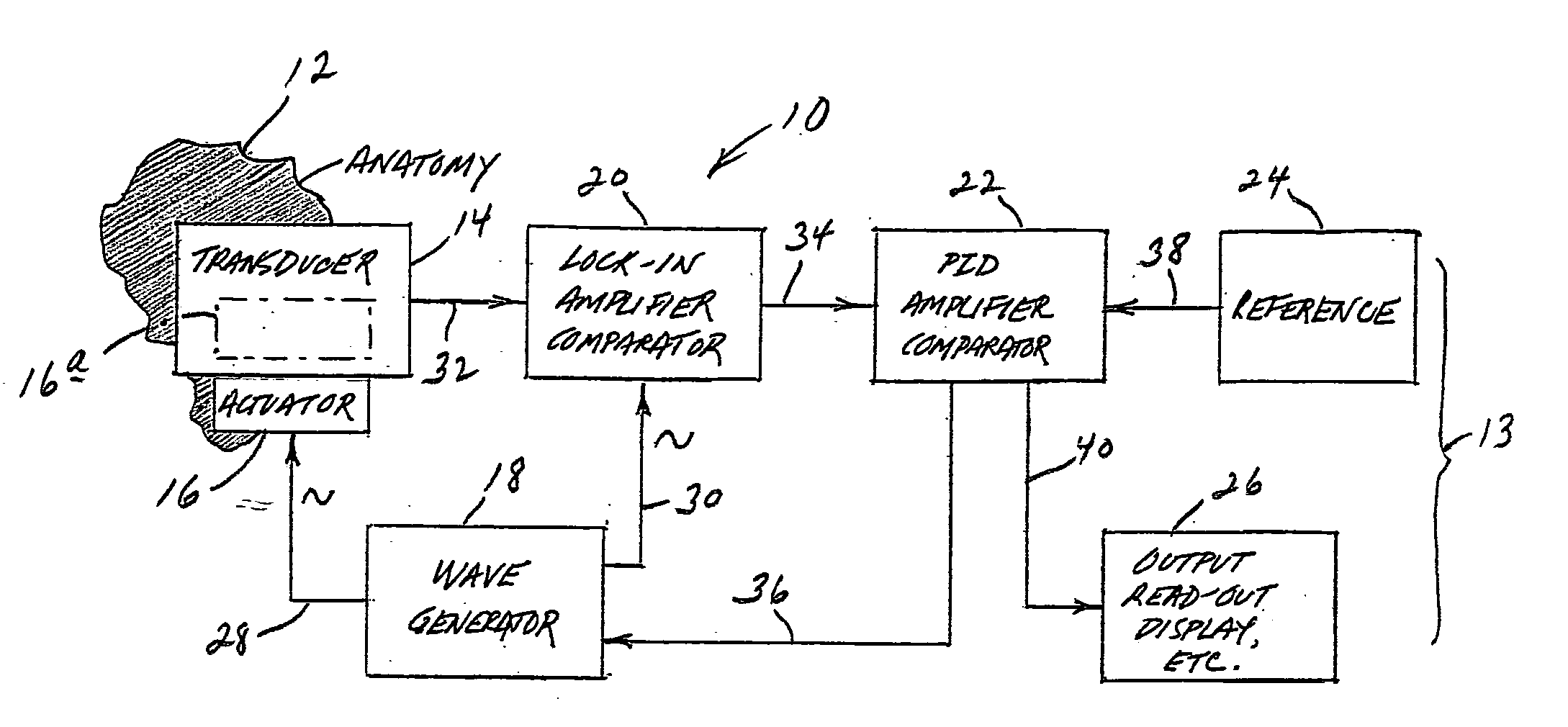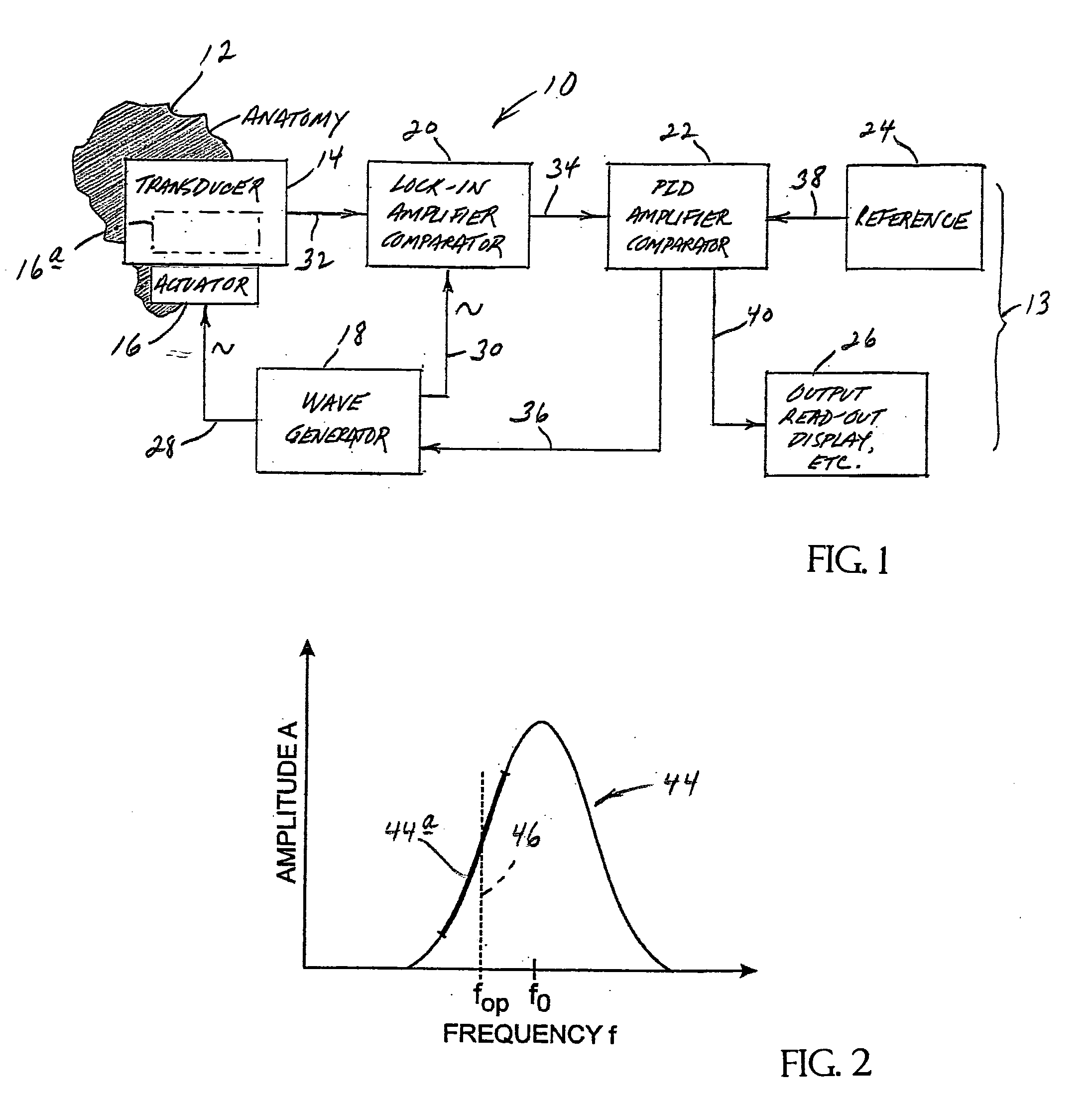Heart-activity sound monitoring
a technology of heart-activity sound and monitoring, applied in the field of heart-activity sound monitoring, can solve the problems of limited techniques and techniques used in conjunction with such known devices
- Summary
- Abstract
- Description
- Claims
- Application Information
AI Technical Summary
Benefits of technology
Problems solved by technology
Method used
Image
Examples
Embodiment Construction
[0023]Turning now to the drawings, and referring first of all to FIG. 1, indicated generally at 10, in block / schematic form, are both the preferred and best-mode versions, or embodiments, of the methodology of the present invention, and a relevant system organization of electrical circuit components which may be assembled as illustrated to carry out and perform the methodology of the invention. Indicated generally at 12 is a fragmentary portion of a subject's anatomy, such as a portion of the chest, with respect to which the methodology of the invention is to be practiced in accordance with what is shown in FIG. 1. Description of the invention will proceed principally and initially in the context of an external application wherein the various circuitry elements / components shown in FIG. 1 are all disposed outside anatomy 12. A bracket 13 which appears at the right side of the figure represents aspects of an internal / implanted modified-invention-form application wherein, for example, ...
PUM
 Login to View More
Login to View More Abstract
Description
Claims
Application Information
 Login to View More
Login to View More - R&D
- Intellectual Property
- Life Sciences
- Materials
- Tech Scout
- Unparalleled Data Quality
- Higher Quality Content
- 60% Fewer Hallucinations
Browse by: Latest US Patents, China's latest patents, Technical Efficacy Thesaurus, Application Domain, Technology Topic, Popular Technical Reports.
© 2025 PatSnap. All rights reserved.Legal|Privacy policy|Modern Slavery Act Transparency Statement|Sitemap|About US| Contact US: help@patsnap.com


